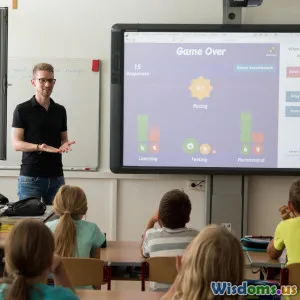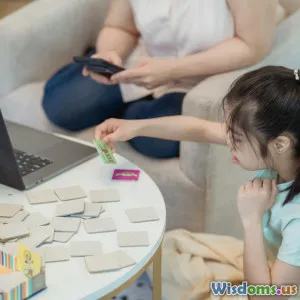
Understanding Learning Styles for Better Education
6 min read Unlock the potential of personalized education by understanding key learning styles for improved teaching and student success. (0 Reviews)
Understanding Learning Styles for Better Education
Education is a dynamic mindscape where one size rarely fits all. Have you ever wondered why some students breeze through lectures while others thrive in hands-on workshops? The answer lies in a crucial insight: learning styles. This understanding not only shapes how educators approach teaching but also ignites learners’ potential by catering to individual needs.
What Are Learning Styles?
Learning styles define the preferred ways individuals absorb, process, and retain information. These preferences guide how students engage with material, shape their motivation, and impact academic success.
Common Learning Styles
While various models exist, the most broadly accepted framework distinguishes among:
- Visual Learners: Prefer images, charts, and spatial understanding.
- Auditory Learners: Retain information through listening including lectures and discussions.
- Kinesthetic Learners: Benefit from physical activities and experiential learning.
- Reading/Writing Learners: Learn best through texts, note-taking, and reading.
For example, a visual learner may better remember historical events by interpreting timelines and maps, whereas an auditory learner could excel by participating in group discussions.
The Science Behind Learning Styles
Research supports the notion that the brain processes information differently based on sensory input pathways. According to a 2018 study by the University of Virginia, matching instructional methods to learning preferences can boost comprehension and retention significantly.
Moreover, neuroplasticity research shows that using varied sensory channels encourages richer neural connections, promoting deeper understanding. However, it's important to underline that no learner fits exclusively into one category; most students benefit from multimodal approaches.
Practical Implications for Educators
Understanding learning styles equips teachers to:
1. Diversify Teaching Methods
Integrating multiple formats—videos, hands-on activities, podcasts, and reading assignments—ensures all learners find accessible entry points to knowledge. For instance, combining a lecture with visual slides and a short interactive experiment caters to auditory, visual, and kinesthetic learners simultaneously.
2. Foster Inclusive Classrooms
By acknowledging diverse preferences, educators create environments where students feel respected and supported, increasing engagement and reducing frustration. A 2019 case study in Finland highlighted improved attendance and participation when teachers incorporated learning style-based methods.
3. Tailor Feedback and Assessment
Providing varied options for demonstrating understanding—oral presentations, written essays, or practical projects—allows students to showcase strengths authentically.
Empowering Students Through Learning Style Awareness
When learners understand their unique preferences, they gain agency over their educational journeys. Encouraging students to self-identify their styles not only motivates them but also helps develop effective study habits.
For example, a kinesthetic learner might discover that incorporating movement breaks or study games improves focus and memory, whereas a reading/writing learner could benefit from summarizing concepts in notebooks.
Addressing Criticisms and Limits
Skeptics argue that strict categorization into learning styles lacks robust evidence and could pigeonhole students, stifling adaptability. They advocate for flexible educational strategies emphasizing active learning regardless of style.
Indeed, a balanced approach acknowledges learning styles as useful guides rather than rigid rules, blending personalization with broad skill development.
Real-World Success Stories
-
Dyslexia-Friendly Programs: Schools adopting multisensory reading techniques—including visual cues, phonetics, and tactile feedback—have witnessed measurably better literacy rates.
-
STEM Education Innovation: Incorporating virtual reality experiences engages multiple learning modes, making complex scientific concepts tangible and memorable.
-
Corporate Training: Companies like Google customize training materials employing videos, interactive examples, and hands-on projects, catering to varied employee learning styles for more effective upskilling.
Actionable Tips to Leverage Learning Styles
- Conduct Learning Style Assessments: Simple questionnaires help identify dominant styles.
- Mix Modalities: Ensure lessons contain visual, auditory, and kinesthetic elements.
- Encourage Self-Reflection: Prompt students to analyze which strategies work best.
- Use Technology: Leverage apps and platforms that support multiple input forms.
- Train Educators: Ongoing professional development in differentiated instruction is key.
Conclusion
Understanding learning styles is a powerful tool in the mission to optimize education. While not a silver bullet, this insight enhances communication between teacher and student, fosters more inclusive experiences, and unlocks pathways to knowledge previously obscured by generic teaching approaches.
By embracing the spectrum of learning preferences and thoughtfully integrating diverse techniques, educators nurture resilience, creativity, and lifelong passion in every learner. As Aristotle insightfully noted, “Educating the mind without educating the heart is no education at all.” Through learning styles, we touch both mind and heart, transforming education into a truly personal voyage.
Embark on your educational journey by exploring your own learning style or enriching your teaching methods today. The next breakthrough in learning might just begin with understanding how you learn best.
Rate the Post
User Reviews
Popular Posts




















